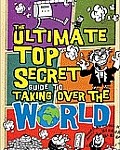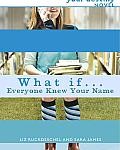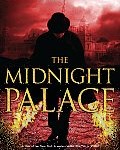Stephanie Stiles is author of the new book Take It Like a Mom, of which Publishers Weekly says “Stiles captures the petty and hilarious dramas that overlay stressed-out suburban lives in her debut, an ode to stay-at-home momdom.” Today I’m featuring a bit of mother-daughter “unadvice” that Stiles has to offer.
Here’s the publisher’s description of Take It Like a Mom:
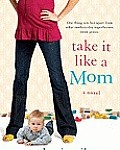
Annie Fingardt Forster used to be a lawyer who wore dry-clean only and shaved both legs. But things have changed. Now a stay-at-home mom, she wears cargo pants and ponytails and harbors a nearly pathological hatred towards hipster parents.
With a three-year-old and a baby on the way, Annie knows what to expect…at least, she thought she did. Faced with her husband’s job loss, pre-school politics, and a playground throwdown with her arch nemesis, Annie realizes that even with her husband and friends by her side, what she really needs is to learn to suck it up-and take it like a mom.
Here’s Stiles’s thoughts on what not to do if you want to have a good relationship with your daughter or your mother:
MOTHERS AND DAUGHTERS: A LITTLE “UNADVICE”
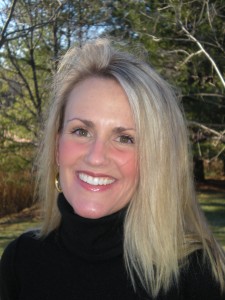
Stephanie Stiles
Is there a relationship more notorious for all of its innate conflicts than that of mothers and daughters? Oh, I mean besides the Jersey housewives. But, other than that, can you think of a relationship more fraught with lore and controversy than the infamous mother-daughter bond? I’ve seen whole marriages crumble under the strain of what moms and daughters confront in a single month of (my) adolescence. So, maybe that’s why everyone and her mother feels entitled to weigh in with advice about how best to navigate these murky, estrogen-laden waters. When it comes to moms and daughters, it would seem that everyone is an expert, eager to share words of “wisdom” on this often incendiary, always inscrutable relationship. And, because I now have a daughter of my very own, I’m on the receiving end of both sides of the equation. So, what follows here is a selection of the choicest suggestions that people have offered me throughout my years as daughter and mother; I like to consider it “unadvice” of sorts, and invite you to determine its merit:
- Don’t be critical of each other’s choices! I once dated a guy who wore black plastic parachute pants. That’s not the sad part. I borrowed them. That is. You know what? I could have used a little criticism. And not just about the pants, either. Because, really, what kind of guy wears black plastic parachutes and then doesn’t mention to you that you look like a Hefty bag in Mia flats when you borrow them? The kind of guy I’d criticize my daughter for dating, that’s who.
- Spend quality time together, doing things you enjoy, rather than fighting! Hah! Good one! Great joke! Oh. Wait. You were serious? Because I thought the fighting was our quality time. Was I wrong here? Do other mothers and daughters enjoy doing something other than this? I suppose there was that one time a while back when we decided to go to a movie, but we spent the whole ride to the theater arguing over the brand of sneakers Dad used to wear to play tennis (I was right: it was K-Swiss), then missed the show because we had to turn back to check his closet. Ahhh, the memories.
- Focus on your similarities, not your differences! Hmm. Similarities, huh? Well, we both wear sleeves in winter. And I’m pretty sure we both owned a lamp at one point or another. That’s a good start, right? Now, if anyone has any ideas about how to spin these into an entertaining conversation around the holiday dinner table, I can be reached at stephaniestiles.com.
- Just give it some time; it’s just a phase! How long can “a phase” last before it becomes “a personality”? I thought “a phase” had to be brief, or if not brief, then at least something short of permanent. Is this not correct? Because it’s uncanny how long the phase of my mother not jumping at my every whim and demand has endured. I’m starting to think she might not outgrow this phase.
- Learn to respect each other! Well, jeesh; why didn’t I think of that? Gosh, I could kick myself! Of course: just respect each other. And I could’ve had a V8, too.
- What she really needs right now is more space! More? Space? Isn’t space infinite? I’m no Stephen Hawking or Albert Einstein, but even I’m smart enough to know that sometimes, even astrophsyics just doesn’t have all the answers.
I may never sort out the how-tos and the how-definitely-not-tos of being a daughter or a mother; but at least, it would seem that no one else has either. Because it would feel just awful to think that all these voices of self-proclaimed authority had truly found the answer, while I was still using crib notes and copying off a brown-noser from the back row. After all, there’s a certain comfort in knowing that my relationship with mom (and, I’m sure I’ll discover soon, with my daughter, as well) is as perfectly flawed as everyone else’s. Even if it is all her fault—for not taking my advice.
Save
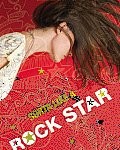 Despite the fact that she is homeless and her mother seems to be shrinking into herself daily, Amber Appleton is an eternal optimist. She loves her dog, Bobby Big Boy, and the group of misfits she leads at school, dubbed Franks Freak Force Federation. Other than the four other members of the group, she has a wide social circle. She teaches English to a group of Korean women at a local church, visits the local nursing home weekly to cheer up the residents, and spends time writing haiku for a local veteran of the Vietnam war.
Despite the fact that she is homeless and her mother seems to be shrinking into herself daily, Amber Appleton is an eternal optimist. She loves her dog, Bobby Big Boy, and the group of misfits she leads at school, dubbed Franks Freak Force Federation. Other than the four other members of the group, she has a wide social circle. She teaches English to a group of Korean women at a local church, visits the local nursing home weekly to cheer up the residents, and spends time writing haiku for a local veteran of the Vietnam war.


